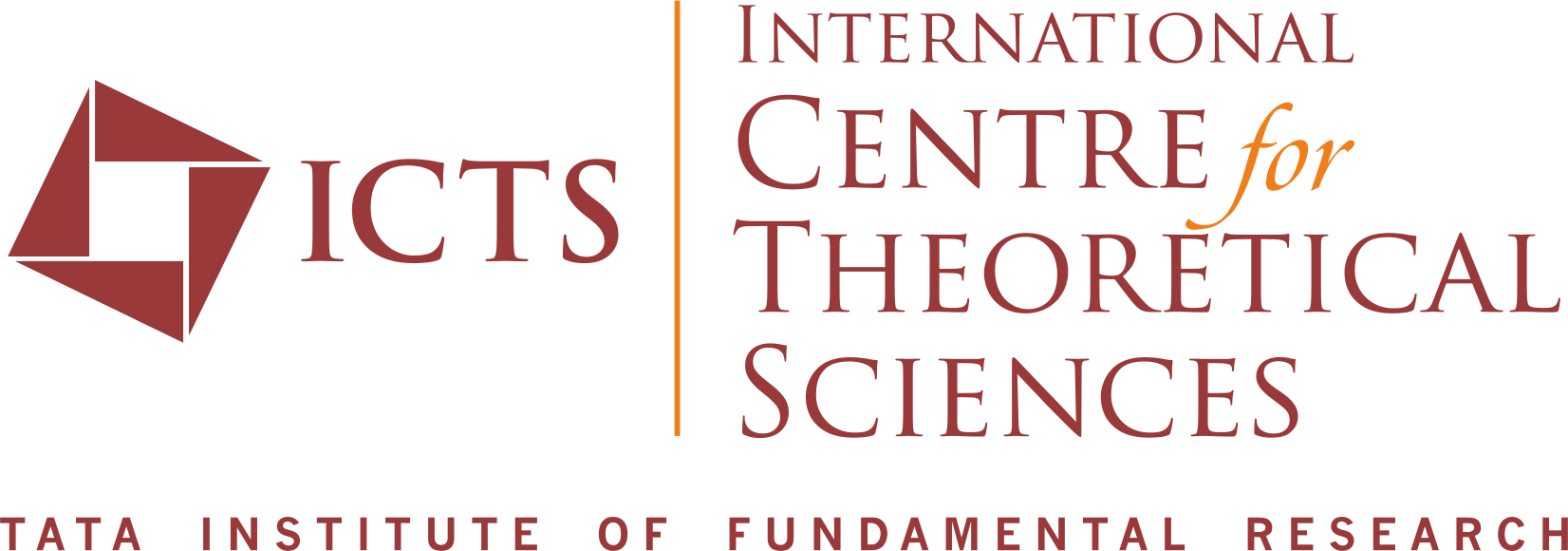|
09:00 to 09:45 |
Xiaoliang Qi (Stanford University, USA) |
Emergent Spacetime from Generalized Free Fields |
|
|
|
09:45 to 10:30 |
Jan de Boer (University of Amsterdam, Netherlands) |
the dual of semi-classical gravity Recent work has produced a consistent picture of the holographic dual description of semi-classical gravity. I will describe this picture, several applications of this picture including the factorization puzzle and the information paradox, and some open questions.
|
|
|
|
11:00 to 11:45 |
Pratik Rath (UC Berkeley, USA) |
Entanglement Negativity and its Holographic Dual The entanglement negativity is a useful measure of quantum entanglement in bipartite mixed states. The holographic dual of this entanglement measure has been controversial with calculations based on CFT techniques conflicting with calculations in random tensor networks (RTNs) that predict replica symmetry breaking. In this talk, I will argue that replica symmetry is broken for general holographic states. The argument involves relating the entanglement negativity to the 1/2 Renyi entropy of a doubled state. In order to compute it holographically, I will also discuss a modified cosmic brane proposal for computing Renyi entropies for n<1. I will comment on the differences with previous CFT calculations as well as those arising from RTNs with non-maximally entangled links.
|
|
|
|
11:45 to 12:30 |
Bartek Czech (Tsinghua University, China) |
Everything Everywhere All at Once Everything Everywhere All at Once: Holographic Entropy Inequalities, Entanglement Wedge Nesting, Topology of Error Correction, Black Holes, Cubohemioctahedron (and maybe the Toric Code)
|
|
|
|
14:00 to 14:45 |
Shreya Vardhan (Stanford University, USA) |
Entanglement dynamics from universal low-lying modes Information-theoretic quantities such as Renyi entropies show a remarkable universality in their late-time behaviour across a variety of chaotic quantum many-body systems. Understanding how such common features emerge from very different microscopic dynamics remains an important challenge. In this talk, I will address this question in a class of Brownian models with random time-dependent Hamiltonians and a variety of different microscopic couplings. In any such model, the Lorentzian time-evolution of the n-th Renyi entropy can be mapped to evolution by a Euclidean Hamiltonian on 2n copies of the system. I will provide evidence that in systems with no symmetries, the low-energy excitations of the Euclidean Hamiltonian are universally given by a gapped quasiparticle-like band. These excitations give rise to the membrane picture of entanglement growth, with the membrane tension determined by their dispersion relation. I will establish this structure in a variety of cases using analytical perturbative methods and numerical variational techniques. I will also discuss qualitative differences in the behaviour of the second and third Renyi entropies. Overall, this structure provides an understanding of entanglement dynamics in terms of a universal set of gapped low-lying modes, which may also apply to systems with time-independent Hamiltonians.
|
|
|
|
14:45 to 15:30 |
Rajdeep Sensarma (TIFR Mumbai, India) |
Entanglement Measures from Correlation Functions I will discuss a new method to calculate entanglement entropy and entanglement negativity from field theories. This method provides a dictionary between correlation functions and entanglement measures for interacting Fermionic systems in and out of equilibrium. I will discuss application of this method to obtain interaction corrections to entanglement entropy of ground state of repulsively interacting Fermi gases.
|
|
|
|
16:00 to 16:45 |
Gautam Sengupta (IIT Kanpur, India) |
Reflected entropy in a BCFT on a black hole background We obtain the reflected entropy for bipartite mixed state configurations involving two disjoint and adjacent subsystems in a two dimensional boundary conformal field theory (BCFT2) in a black hole background. The bulk dual is described by an AdS3 black string geometry truncated by a Karch-Randall brane. The entanglement wedge cross section computed for this geometry matches with the reflected entropy obtained for the BCFT2 verifying the holographic duality. In this context, we also obtain the analogues of the Page curves for the reflected entropy and investigate the behaviour of the Markov gap.
|
|
|
|
16:45 to 17:30 |
Sunil Sake (Yukawa Institute for Theoretical Physics, Kyoto, Japan) |
York slicing in JT gravity In this talk, I will explore In AdS_2, states corresponding to slices of constant extrinsic curvature. We give an explicit construction of such states in JT gravity by studying the problem of non-smooth boundary conditions. The states are obtained by carrying out the appropriate Euclidean path integrals. We will discuss various checks on these states such as the classical limit, how the states constructed this way satisfy the WDW constraint etc.
|
|
|

